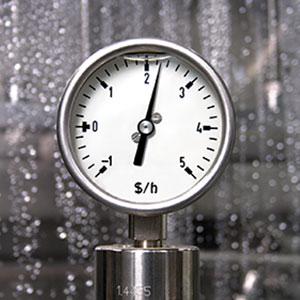How Do Air Separator Water Tanks Work?

|
|
One common problem with hydro pneumatic tanks is loss of air cushion, resulting in a “water-logged” tank. Source: iStock |
With the increasing popularity of the submersible pump in the 1950s, this became a serious problem. Most of the time the owner could not hear the pump run, was not aware of an impending problem and only called for service after the pump had burned out its controls or its motor. On a rare occasion, perhaps one time in 25, where a serviceman encountered a water-logged tank he would encounter an air-logged tank. This was a tank full of compressed air. Opening a faucet connected to one of these usually resulted in a broken drinking water glass, upsetting the owner greatly and sending his wife into orbit. However, as I just said, in our area this was a more rare condition.
Anyway, sometime in the 1940s or early 1950s, some smart person figured out that the cause of the water-logging condition was either “minor” air leaks in the top of the tank or the water was absorbing the air. The water would literally eat the air and this seemed to vary with the make-up of the water — on some systems water logging was a pretty rare and on others it was very frequent. Up to this point, the answer had been to replace the leaked or absorbed air with some sort of air-pumping device operated by a water pump — now there is a conundrum, if ever. I have reviewed these air-pumping devices in earlier columns and can only say that some of them worked some of the time. Finally, somebody got the bright and correct idea that if the water and air were separated air absorption would not occur.
So, in the mid- to late-1950s the industry began to see a tank called an air-separator tank. This was typically a 42-, 80-, or 120-gallon tank with an air disc inside. The disc was nearly the diameter of the inside of the tank and was made of a material that floated on water. With this installed in the tank by the manufacturer, the water and air were effectively separated and air absorption, if not eliminated, was seriously reduced. These tanks also were new and unique in that they had no openings part way up the tank and, importantly, at the top. A leaking top plug would cause a tank to water log in a couple of days. With no plug, there was no chance of a leak. With a single opening at the extreme bottom we saw the introduction of the tank Tee.
Today the tank Tee is a very common item and allows us to install switches, gauges, relief valves and drains on tanks that have only one opening. This was pretty wild stuff in the mid-1950s. This also allowed these types of tanks to “float” on the line. If the pump happened to be running and the owner was using water at the same time, that water never entered the tank so it could not absorb any air — another added feature. The first of these tanks that I saw was coated steel, but not galvanized, and that sadly led to their demise. However, the concept worked and the industry was able to adapt this technology — the air water separator disc — to galvanized tanks.
About this time, some smart person also figured out that you could pre-charge one of these tanks with an air compressor and they would accept a lot more water on a typical cycle than the old style conventional tank. Some later tanks that I worked on did have a small-diameter tapping for an air valve, usually at or near the bottom of the tank.
I remember a salesman telling me that an air separator tank properly pre-charged would hold its air volume up to 17 years. This sounded a bit too good to be true and, in fact, was. But this tank design was a huge improvement over the plain old tank with water and air inside that we had been using. I did have some of these systems that would go from two to five years with an air charge. Again, I think, the makeup of the water with slight differences, so-called impurities and the usage cycles controlled how long one could go with one air charge in these tanks. Understand that in 1957 this concept was really high-tech and it was a huge leap forward. Later, the industry figured out how to make an air separator tank out of almost any tank. I will write about that next time.
After months of telling you about snow, cold, rain and just plain nasty weather, summer has arrived. We have had several days of hot, humid weather following weeks of really nice late spring weather — warm and sunny with cool nights, great working weather. All you readers be good and be careful until next time.
For more John Schmitt columns, visit www.thedriller.com/schmitt.
Looking for a reprint of this article?
From high-res PDFs to custom plaques, order your copy today!


